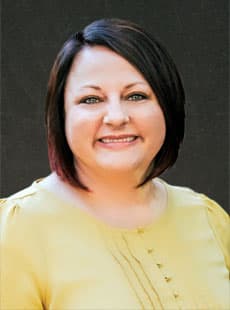World Languages
Course Preface
FREQUENTLY ASKED QUESTIONS
UTAH WORLD LANGUAGES CORE STANDARDS FOR PROFICIENCY
- What is the Utah World Languages Core Standards for Proficiency?
The Utah World Languages Core Standards for Proficiency are a description of the competencies a Utah world language learner should demonstrate at three of five proficiency levels as defined in the 2012 American Council for the Teaching of Foreign Languages (ACTFL) Proficiency Guidelines. These guidelines are a description of what individuals can do at five levels of proficiency in speaking, writing, listening, and reading. They imply spontaneous and non-rehearsed performance in a real-world context. The three proficiency levels used for this document, novice through advanced, are further subdivided into low, mid and high sub levels.
- Given the changing role of world languages in the 21st century global economy, what is the rationale for revising the 2009 Utah World Languages Core?
This proficiency approach to learning languages prepares students to be college and career ready and builds state and national language capacity to improve economic competitiveness and strengthen national defense strategies. Equally, it answers the growing need for the critical skills of language and cultural competencies for relationship building—a keystone for success in global business and diverse social environments.
It is the responsibility of the state's educational system to prepare students to compete in an increasingly international job market and to live in an increasingly diverse world. Foreign investment and international trade in Utah have grown dramatically in recent years. Foreign visitors are equally important to the state's tourism industry. All are significant and vital parts of the state economy.
Demonstrating proficiency in a language other than English has potential benefits to learners. Career and technical education programs provide opportunities for learners to obtain industry-recognized certificates that document their skill attainment. Language proficiency can also be documented through a variety of nationally recognized assessments and used in portfolios for potential employment. Military careers now require officers to have second language proficiency and offer incentive pay to recruits and Reserve Officers’ Training Corps (ROTC) members. Additionally, candidates with world language proficiency are highly recruited for career opportunities in agriculture, health care, law enforcement, and business.
The rationale for the creation of this document stems from the need to provide a more transparent, learner-friendly document that clearly describes benchmarks of what learners can do with language at various stages. Its intent is to recognize that everyone can learn a language, to motivate learning and increase achievement through goal setting and self-assessment, and to facilitate building functional language skills and interculturality. The standard, benchmarks, indicators and targets are meant to guide learning and should be shared with learners and made available to parents and other stakeholders. - What is the purpose of the Utah World Languages Core Standards for Proficiency?
In general, the purpose is to clarify the process of language learning. The standard document helps motivate learning by showing how to set achievable goals, self-assess and chart progress by using “I can” statements that facilitate this process. Learners thus take ownership of their individual language development. The standard document guides the facilitation of language learning toward more functional, communicative and intercultural goals, rather than those of language structure and cultural fact. It provides examples of learning targets that can be used regardless of age, class level, or content studied. By posting or citing daily learning targets and celebrating success, teachers can model behavior that leads students to become autonomous learners. This document provides a clearer understanding of what learners need to know and be able to do to move from one level to the next.
For learners, the purpose is to:- demystify language learning by simplifying and clarifying the process.
- provide clear descriptions of what can be done with language at various levels and make expectations more realistic.
- offer examples of small, incremental, and achievable goals that learners can use as models to set personal goals, self-assess, and chart their own progress.
- guide facilitation of language learning toward more functional, communicative and intercultural goals, rather than those of language structure and cultural fact.
- provide examples of learning targets that can be used across ages, class levels, or content studied.
- suggest learning experiences, scenarios, and integrated performance assessment tasks.
- provide a cross-check for ensuring that each mode of communication and skill is addressed at each level.
- clarify what learners need to be able to do in order to move from one level to the next.
- demonstrate how world language learning has moved from a focus on grammar and translation toward effective communication, literacy, and cultural interaction.
- demonstrate how the shift has occurred in classical languages from decoding and translation to interpretive reading proficiency.
- define exactly what is expected of learners at different levels of proficiency.
- emphasize real-world application for language use.
- Why does the Utah World Languages Core Standards for Proficiency apply to all learners regardless of grade level?
Learners begin new language experiences at different ages and progress toward proficiency at different rates. The amount of quality time spent in the target language (i.e., dual language immersion vs. high school level I) is a determining factor in the proficiency level that learners will reach. Learners at similar ages frequently demonstrate varying proficiency levels in all three modes of communication when assessed. The Utah World Languages Core Standard for Proficiency outlines the progression of learner skills, making it easier for teachers to identify a learner’s skill level and to differentiate learning for all learners.
- How does the Utah World Languages Core Standards for Proficiency apply to heritage speakers?
Learners bring a variety of languages and cultures to Utah. They may have learned a language at home, in another country, or through local communities. Some may decide to pursue the study of their native language, while others may decide to study a different language. When heritage speakers choose to continue their native language, differentiated learning must take place to meet their needs.
When determining the placement of heritage speakers in language courses, consideration should be given to proficiency levels rather than seat time. Within language courses, the performance indicators allow teachers to set class goals while allowing learners to modify them to meet their own personal learning goals. Heritage speakers may demonstrate varying levels of proficiency across the three modes of communication: interpersonal, interpretive and presentational. For example, they may perform at a higher level of proficiency in the interpersonal mode than in the presentational mode. The benchmarks and indicators identify the learner’s skill and modify the learning experience to meet the learner’s needs. When possible, specially designed language courses for heritage speakers are optimal.
- How does the Utah World Languages Core Standards for Proficiency align with the new Utah Core Standards?
“The Utah Core Standards for English Language Arts (ELA) and Literacy in Social Studies and Science contains four strands: Reading, Writing, Speaking and Listening, and Language.
These four strands are represented in the National Standards for Learning Languages by the Communication standards (interpersonal, interpretive, and presentational) and the level of proficiency demonstrated. In addition, the standards of the other four goals areas for learning languages—Cultures, Connections, Comparisons, and Communities—also support and are aligned with the Utah Core. These standards describe the expectations to ensure all students are college-, career-, and world-ready.
The Utah Core strands of Reading, Writing, Speaking and Listening are captured in the standards for learning languages’ goal area of Communication, by emphasizing the purpose behind the communication:- Interpersonal (speaking + listening or writing + reading)
- Interpretive (reading, listening, viewing)
- Presentational (writing, speaking, visually representing)
- How are the Utah World Languages Core Standards for Proficiency organized?
STANDARD: Every learner will use a world language, in addition to English, to engage in meaningful, intercultural communication, understand and interpret the spoken and written language, and present information, concepts and ideas in local and global communities. Through learning the language, they will gain an understanding of the perspectives of other cultures and compare the language and cultures learned with their own.Summary of Standards for Foreign Language Learning in the 21st Century
The content of the Utah World Languages Core Standards for Proficiency is organized according to the national standards, blending the two focus goal areas of Communication and Cultures into one standard. The remaining goals of Connections, Comparisons, and Communities are embedded within Communication and Cultures.
The language competencies are:- interpretive listening and reading,
- interpersonal communication, and
- presentational speaking and writing.

The intercultural competencies are:
- investigation of cultures’ products and practices
- understanding of cultures’ perspectives (ways of thinking), and interaction, bridging one’s own and the other’s culture.


- How will the Utah World Languages Core Standards for Proficiency be used?
Districts, schools, programs, and independent learners will- create long-range program proficiency goals reflective of a shared vision.
- identify proficiency benchmarks for assessment at designated intervals.
- develop a backward-design plan to support learners in meeting identified proficiency benchmarks.
- How will teachers use the Utah World Languages Core Standards for Proficiency to plan?
In order to make the best use of this document, teachers will apply the principles of backward design to curriculum, unit, and lesson planning. The premise of backward design consists of three stages:- identify the desired results;
- determine what evidence demonstrates that learners have achieved those results; and then
- plan learning experiences that match. (Wiggins and McTighe).
As teachers implement the document they use the- standard as the mission and vision that drives all language-learning decisions.
- core competency “ I can” statements to ensure that all elements of language learning and interculturality are appropriately balanced.
- benchmark statements to establish the expectations for learner performance at the identified proficiency level.
- learning indicators to identify measurable, attainable goals.
- sample learning targets as examples of real-world contexts that can facilitate and motivate language learning.
- Why and how do teachers and learners address intercultural competencies?
The need for language competence in a global society touches every sector of life. From career preparation in an international workforce to citizen diplomacy and national defense to one’s role in a social or virtual community, communication across cultures is key. Learners today must have the language proficiency to communicate with global audiences, the insight into the cultural perspectives that shape those audiences, and the ability to behave appropriately in a variety of cultural contexts. The series of can-do statements organized around the language proficiency levels (2012 ACTFL Proficiency Guidelines) guides learners in their development of such linguistic and intercultural competencies.
Intercultural competence, therefore, is the demonstration of interaction between the use of language skills and cultural knowledge. The ACTFL Standards for Foreign Language Learning in the 21st Century highlights the need for learners to understand the relationship between a culture’s perspectives and its products and practices. A culture’s perspectives reflect the values, beliefs and attitudes of its people. Through contact with products (i.e., monuments, laws, music, etc.) developed by a culture and practices (eating habits, shopping behaviors, use of space, etc.) demonstrated by its people, we come to understand the perspectives (i.e., values, attitudes, beliefs, etc.) of a people.
Demonstrating intercultural competence requires both the ability to use the language and to behave appropriately in cultural contexts. This may be particularly challenging for learners in the early stages of language learning who may not have the linguistic skill to address cultural perspectives in the language of study. It is the responsibility of all those who facilitate language learning - be they teachers in Dual Language Immersion in the Elementary School (DLI) or secondary middle/jr. high school and high school, or virtual programs - to provide opportunities for learners to experience language and culture together. Learners and educators must recognize that language and culture are inseparable. This requires the near exclusive use of the language of study. Thus, as language proficiency grows, so will intercultural competence.
Just as the proficiency level can-do statements of novice, intermediate, advanced, and superior are cumulative in nature for language competencies, they are cumulative for intercultural competencies as well. Learners demonstrate evidence of novice-level competencies first, and then add evidence of intermediate-level competencies and so forth. They continually add to their repertoire as they move up the proficiency continuum, applying knowledge of products and practices before developing and applying an understanding of perspectives. The interaction of language and cultural competencies thus results in interculturality.
Unlike the language benchmarks and indicators, the interculturality can-do statements are not divided into low, mid, and high sublevels. Learners are expected to demonstrate the interculturality benchmarks when they have demonstrated the highest language proficiency sublevel. For example, learners who have demonstrated novice high language competencies should also be demonstrating the novice level interculturality competencies.
- How much language learning is enough?
The answer lies in one’s purpose for learning language as indicated below in ACTFL’s Oral Proficiency Levels in the Work World. This table is a synthesis of data collected from employers who describe their language proficiency requirements for specific jobs and professions.
Oral Proficiency Levels in the Work World
Proficiency Levels Language Functions Corresponding Jobs Examples of Who is Likely to Function at the Level Distinguished Ability to tailor language to specific audiences, persuade, & negotiate.
Deal with nuance and subtletyDiplomat, Contract Negotiator, International Specialist, Translator/Interpreter
Intelligence Specialist- Highly articulate, professionally specialized native speakers;
- L2 learners with extended ( 17 years) and current professional and/or educational experience in the target culture
Superior Discuss topics extensively, support opinions, & hypothesize.
Deal with linguistically unfamiliar situationsUniversity FL Professor, Business Executive, Lawyer, Judge, Financial Advisor - Well- educated native speakers
- Educated L2 learners with extended professional and/or educational experience in the target language environment
Advanced High Narrate and describe in past, present, and future and deal effectively with an unanticipated complication. Physician, Military Linguist, Senior Consultant, Human Resources Personnel, Financial Broker, Translation Officer, Marketing Manager, Communications Consultant - L2 learners with graduate degrees in language-related area and extended educational experience in the target environment
Advanced Mid Account Executive, Court Stenographer, Court Interpreter,
Benefits Specialist, Technical Service Agent, Collection Representative, Estimating Coordinator- Heritage speakers, informal learners, non-academic learners who have significant contact with language
Advanced Low Customer Service Agent, Social Worker, Claims Processor, K-12 Language Teacher, Police Officer, Maintenance Administrator, Billing Clerk, Legal Secretary,
Legal Receptionist- Undergraduate language majors with year-long study abroad experience
Intermediate High Create with language, initiate, maintain, and
bring to a close simple conversations by asking and responding to simple questions.Auto inspector, Aviation Personnel, Tour Guide - Undergraduate language majors without year-long study abroad experience
Intermediate Mid Cashier, Sales Clerk, Missionary
(highly predictable contexts)- L2 learners with 6-8 year sequences of study (AP, etc.) or 4-6 semester college sequence
Intermediate Low Receptionist, Housekeeping Staff - L2 learners with 4 year high school sequence or 2 semester college sequence
Novice High
Novice Mid
Novice LowCommunicate minimally with formulaic and rote utterances, lists, and phrases. None L2 learners after 2 years of high school study ©ACTFL, Inc. 2012
As indicated in the Oral Proficiency Levels in the Work World chart above, language preparation for career readiness necessitates higher levels of proficiency than established by current language requirements for high school graduation and college entrance.
- Are there multiple articulated language pathways?
THREE ARTICULATION PATHWAYS
Three articulation pathway models have been developed for implementation throughout the State of Utah and allow for entry at various points in the K-12 system: in elementary Dual Language Immersion, early Secondary and late Secondary language programs.
Elementary Dual Language Immersion Pathway
Students in the elementary immersion pathway enter in kindergarten or first grade and exit at sixth grade (in some instances fifth grade). A minimum of 50% of content curriculum is conducted in the target language daily. The elementary Dual Language Immersion pathway continues in early Secondary with three years of specialized content study where students are offered two courses per year, one in a content area and a second honors-level target language course. Students in ninth grade take the target language AP course and examination on exit. Dual Language Immersion pathway students entering high school are offered advanced-level target language courses equivalent to 3000 (300) level university courses. These courses will allow high school students to earn college credit towards a target language minor through articulation agreements with Utah university institutions. In addition, Dual Language Immersion students are encouraged to start the study of a third language in tenth grade.
Early Secondary Pathway
Students enter the early Secondary pathway in seventh grade (in some cases sixth grade) and are given one target language course per year for six years. Students take the target language AP course and examination in the eleventh or twelfth grade.
Late Secondary Pathway
Students enter the late secondary pathway in the ninth or tenth grade with one target language course per year for three to four years. Some accelerated students take the target language AP course and examination in twelfth grade.


 UTAH EDUCATION NETWORK
UTAH EDUCATION NETWORK

 Justin
Justin Braxton
Braxton Dani
Dani Kayla
Kayla Katie
Katie Lora
Lora Rob
Rob Val
Val
